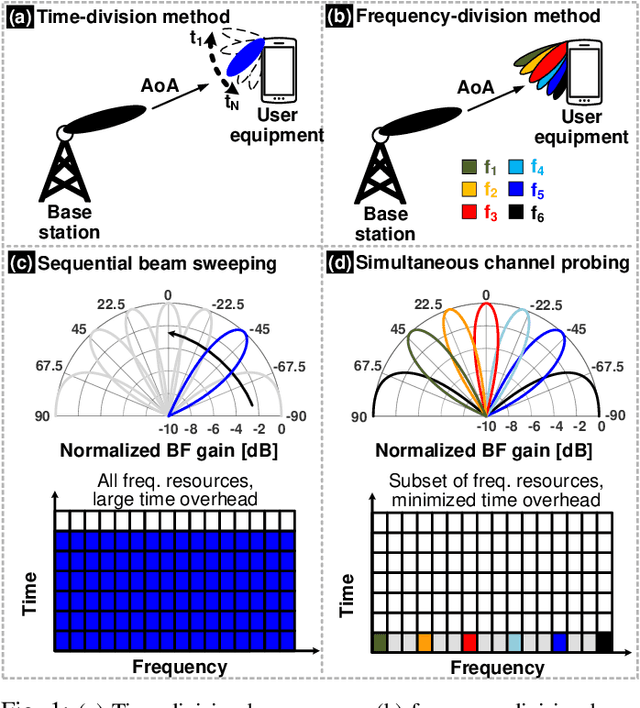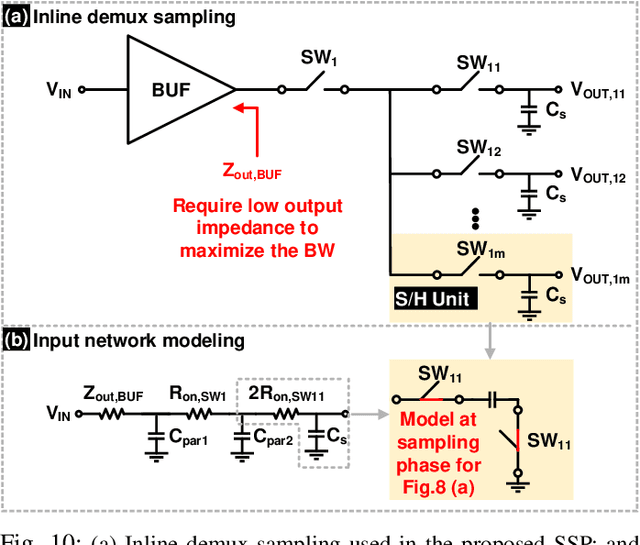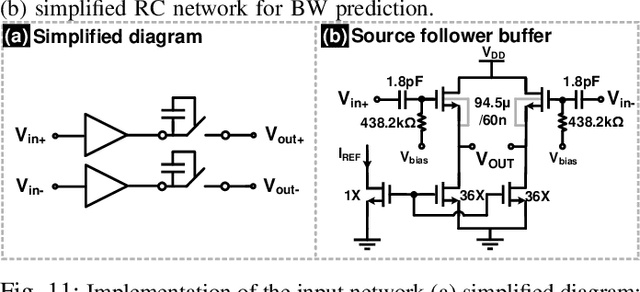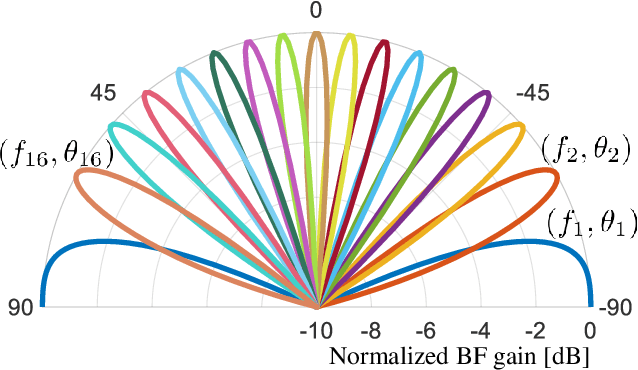Qiuyan Xu
Multi-Mode Spatial Signal Processor with Rainbow-like Fast Beam Training and Wideband Communications using True-Time-Delay Arrays
Jan 08, 2022



Abstract:Initial access in millimeter-wave (mmW) wireless is critical toward successful realization of the fifth-generation (5G) wireless networks and beyond. Limited bandwidth in existing standards and use of phase-shifters in analog/hybrid phased-antenna arrays (PAA) are not suited for these emerging standards demanding low-latency direction finding. This work proposes a reconfigurable true-time-delay (TTD) based spatial signal processor (SSP) with frequency-division beam training methodology and wideband beam-squint less data communications. Discrete-time delay compensated clocking technique is used to support 800~MHz bandwidth with a large unity-gain bandwidth ring-amplifier (RAMP)-based signal combiner. To extensively characterize the proposed SSP across different SSP modes and frequency-angle pairs, an automated testbed is developed using computer-vision techniques that significantly speeds up the testing progress and minimize possible human errors. Using seven levels of time-interleaving for each of the 4 antenna elements, the TTD SSP has a delay range of 3.8 ns over 800 MHz and achieves unique frequency-to-angle mapping in the beamtraining mode with nearly 12 dB frequency-independent gain in the beamforming mode. The SSP is prototyped in 65nm CMOS with an area of 1.98mm$^2$ consuming only 29 mW excluding buffers. Further, an error vector magnitude (EVM) of 9.8% is realized for 16-QAM modulation at a speed of 122.8 Mb/s.
Wideband Beamforming with Rainbow Beam Training using Reconfigurable True-Time-Delay Arrays for Millimeter-Wave Wireless
Nov 30, 2021



Abstract:The decadal research in integrated true-time-delay arrays have seen organic growth enabling realization of wideband beamformers for large arrays with wide aperture widths. This article introduces highly reconfigurable delay elements implementable at analog or digital baseband that enables multiple SSP functions including wideband beamforming, wideband interference cancellation, and fast beam training. Details of the beam-training algorithm, system design considerations, system architecture and circuits with large delay range-to-resolution ratios are presented leveraging integrated delay compensation techniques. The article lays out the framework for true-time-delay based arrays in next-generation network infrastructure supporting 3D beam training in planar arrays, low latency massive multiple access, and emerging wireless communications standards.
 Add to Chrome
Add to Chrome Add to Firefox
Add to Firefox Add to Edge
Add to Edge